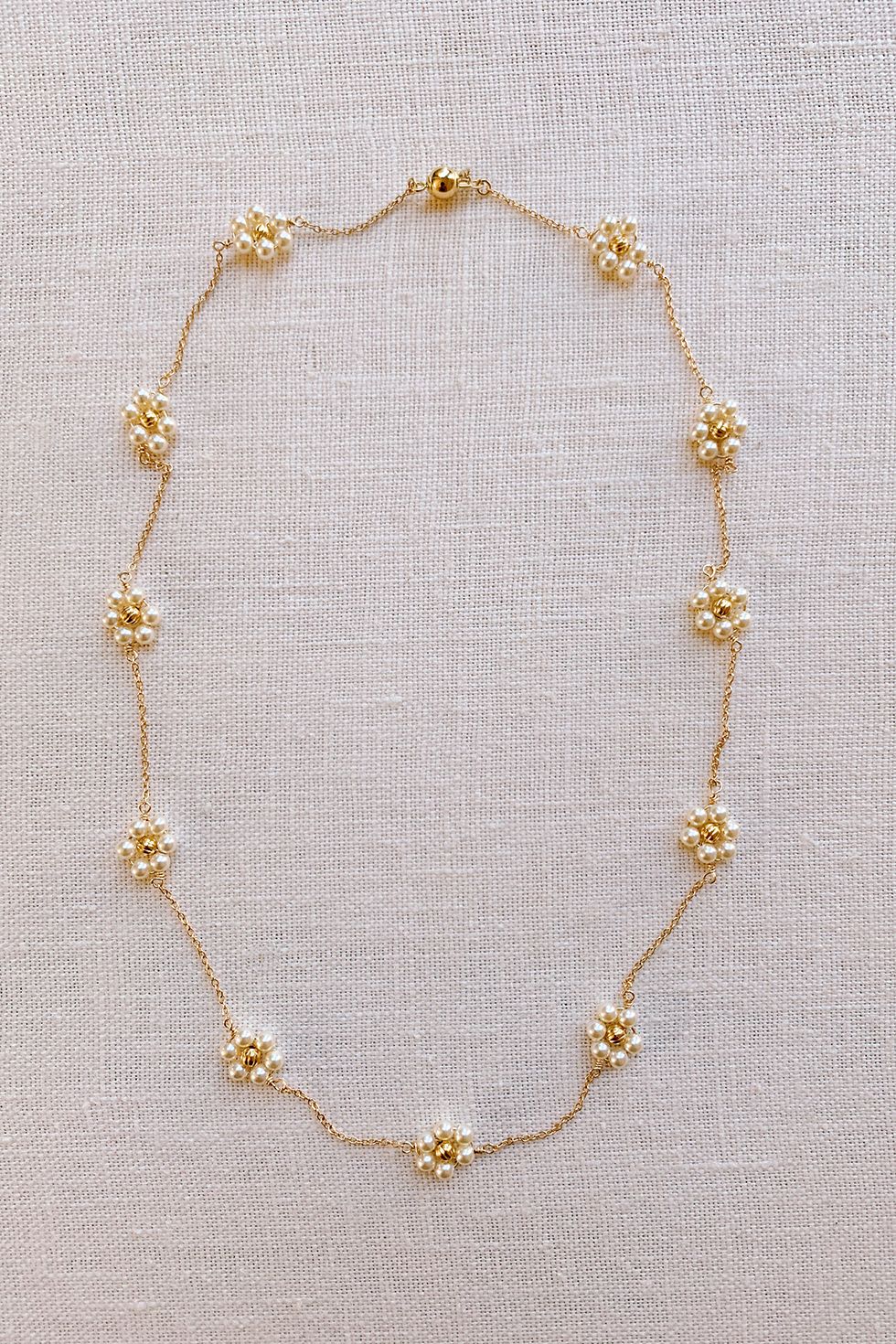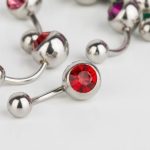Located in the heart of Yekaterinburg, the Museum of Stone-Cutting and Jewelry Art History stands as a testament to the rich cultural heritage of this historic city. Yekaterinburg, known for its fascinating history and vibrant art scene, is a city that has played a significant role in shaping the stone-cutting and jewelry art industry in Russia. The museum houses an impressive collection of artifacts that showcase the evolution of this art form throughout the centuries.
As we delve into the origins of stone-cutting and jewelry art in Yekaterinburg, it becomes evident that these crafts have been an integral part of the city’s cultural identity for centuries. The historical overview provides valuable insights into how these art forms have evolved over time, reflecting the traditions and innovations that have shaped Yekaterinburg’s artistic landscape.
Stepping into the Museum of Stone-Cutting and Jewelry Art feels like embarking on a journey through time. The virtual tour offers visitors an immersive experience, allowing them to explore the museum’s exhibits from anywhere in the world. From ancient artifacts to modern masterpieces, the museum’s collection offers a comprehensive look at the intricate craftsmanship and artistic expressions that define Yekaterinburg’s stone-cutting and jewelry art history.
The Origins of Stone-Cutting and Jewelry Art in Yekaterinburg
Yekaterinburg, a city rich in history and culture, is renowned for its significant contributions to the art of stone-cutting and jewelry making. The origins of these crafts in Yekaterinburg can be traced back to the 18th century when the Ural region became a hub for precious stone mining and processing. This historical overview provides insight into the development of stone-cutting and jewelry art in Yekaterinburg, highlighting the city’s pivotal role in shaping these artistic disciplines.
During the 18th and 19th centuries, Yekaterinburg emerged as a prominent center for lapidary art, attracting skilled artisans and craftsmen who specialized in cutting and carving gemstones. The abundance of precious stones such as malachite, jasper, and rhodonite in the Ural Mountains fueled the growth of the local stone-cutting industry. These artisans honed their expertise in transforming raw gemstones into exquisite works of art, drawing inspiration from both traditional Russian motifs and Western European design styles.
The Museum of Stone-Cutting and Jewelry Art History Yekaterinburg offers a fascinating glimpse into this era through its extensive collection of artifacts that showcase the evolution of stone-cutting and jewelry making techniques. Visitors can explore a virtual tour that takes them on a journey through time, allowing them to appreciate the intricate craftsmanship and aesthetic beauty of these historical pieces.
From ornate gemstone carvings to delicately crafted jewelry items, the museum houses a diverse array of exhibits that illustrate the rich heritage of stone-cutting and jewelry art in Yekaterinburg.
- Notable exhibits at the Museum:
- Gemstone carvings depicting scenes from Russian folklore
- Historical jewelry pieces worn by Russian nobility
- Tools and equipment used by stone-cutters and jewelers in 18th century Yekaterinburg
- The Evolution of Stone-Cutting and Jewelry Art in Yekaterinburg:
- Incorporation of modern design influences into traditional lapidary techniques
- Innovation in gemstone cutting methods
- Revival of traditional Russian jewelry motifs
- The Role of Stone-Cutting and Jewelry Art in Yekaterinburg’s Cultural Identity:
- Influence on local customs and traditions
- Integration of lapidary art into religious ceremonies
- Celebration of Ural gemstones as symbols of regional pride
Exploring the Museum of Stone-Cutting and Jewelry Art
Located in the city of Yekaterinburg, the Museum of Stone-Cutting and Jewelry Art History is a treasure trove of historical and cultural significance. Through a virtual tour of the museum, visitors can immerse themselves in the rich heritage of stone-cutting and jewelry art in this region. The museum provides a captivating glimpse into the evolution of these art forms over time, offering a deeper understanding of their role in shaping Yekaterinburg’s cultural identity.
As visitors embark on their virtual tour of the museum, they will be greeted by a vast collection of artifacts that showcase the craftsmanship and skill of the region’s stone-cutters and jewelry artisans. From intricately carved gemstones to exquisitely designed jewelry pieces, each exhibit tells a story of creativity, tradition, and artistic innovation.
Through interactive displays and detailed descriptions, the virtual tour allows for an engaging exploration of the museum’s diverse exhibits, offering insights into the techniques, materials, and cultural influences behind each masterpiece.
One notable aspect of the virtual tour is the opportunity to gain a deeper appreciation for Yekaterinburg’s historical significance as a hub for stone-cutting and jewelry artistry. By delving into the origins and development of these art forms in this region, visitors can cultivate a greater understanding of how they have contributed to shaping the cultural narrative of Yekaterinburg.
The virtual tour serves as a window into the past, providing valuable context for appreciating the enduring legacy of stone-cutting and jewelry art history in Yekaterinburg.
Notable Exhibits at the Museum
When visiting the Museum of Stone-Cutting and Jewelry Art History in Yekaterinburg, visitors are presented with a dazzling array of exhibits that showcase the rich tradition and craftsmanship of stone-cutting and jewelry art in the region. Here are some of the most notable exhibits that you should not miss when exploring the museum:
- The Ural Emerald
- The “Big Cross” Collection
- The Fabergé Eggs Exhibit
One of the museum’s most prized possessions is the Ural Emerald, a stunning gemstone that is synonymous with the region’s wealth of natural resources. Its deep green color and exquisite cut make it a must-see for any visitor interested in precious stones.
Another highlight of the museum is the “Big Cross” Collection, which features intricately carved crosses made from various gemstones. Each cross showcases the superb craftsmanship and attention to detail that has been a hallmark of stone-cutting art in Yekaterinburg for centuries.
No visit to the Museum of Stone-Cutting and Jewelry Art History would be complete without marveling at the Fabergé Eggs Exhibit. These ornate and opulent eggs crafted by Peter Carl Fabergé are iconic symbols of luxury and refinement, representing the height of jewelry artistry in Yekaterinburg during the late 19th and early 20th centuries.
The Evolution of Stone-Cutting and Jewelry Art in Yekaterinburg
Yekaterinburg has a rich history when it comes to stone-cutting and jewelry art, dating back to the 18th century. The city was known for its high-quality gemstones and the skilled artisans who transformed them into exquisite pieces of jewelry. The Ural Mountains, where Yekaterinburg is situated, are renowned for their deposits of precious and semi-precious stones, making it a hub for stone-cutting and jewelry artistry.
Historical Overview
The art of stone-cutting and jewelry making in Yekaterinburg has deep roots in the city’s history. Yekaterinburg was founded in 1723 as a metallurgical plant, and by the end of the 18th century, it became a center for lapidary art due to its proximity to valuable stone deposits. This led to the establishment of cutting workshops and jewelry factories that produced intricate pieces using locally sourced gemstones.
Modern Innovations
In present times, Yekaterinburg continues to uphold its legacy as a center for stone-cutting and jewelry art. With advancements in technology and design, contemporary artisans have incorporated modern techniques while staying true to traditional methods. The Museum of Stone-Cutting and Jewelry Art History Yekaterinburg showcases not only historical artifacts but also contemporary creations that highlight the evolution of this craft.
Preserving Tradition
As Yekaterinburg moves towards a more globalized society, there is an emphasis on preserving the heritage of stone-cutting and jewelry art. Efforts are being made to ensure that future generations can appreciate the significance of this tradition in shaping the cultural identity of the city. The museum serves as a vital institution in this endeavor, offering a glimpse into the past while celebrating the present innovations in stone-cutting and jewelry artistry.
The Role of Stone-Cutting and Jewelry Art in Yekaterinburg’s Cultural Identity
Yekaterinburg, a city with a rich and diverse history, has long been known for its unique cultural identity. One of the key elements that have contributed to this identity is the art of stone-cutting and jewelry making. The Museum of Stone-Cutting and Jewelry Art History Yekaterinburg serves as a testament to the important role that these crafts have played in shaping the city’s cultural heritage.
Distinctive Techniques and Styles
The art of stone-cutting and jewelry making in Yekaterinburg is characterized by distinctive techniques and styles that have been passed down through generations. From traditional filigree work to intricate gemstone cutting, these crafts showcase the skilled craftsmanship and creative expression that are integral to the city’s cultural identity.
Historical Significance
The historical significance of stone-cutting and jewelry art in Yekaterinburg cannot be overstated. These crafts have been intertwined with significant events and periods in the city’s history, reflecting the social, political, and economic changes that have shaped Yekaterinburg over the centuries. The museum houses artifacts that embody this historical significance, providing visitors with a firsthand look at how these crafts have evolved and adapted over time.
The museum also serves as a hub for contemporary artists and artisans who continue to innovate within the traditions of stone-cutting and jewelry art. By showcasing both traditional works and modern interpretations, the museum highlights the ongoing relevance of these crafts to Yekaterinburg’s cultural identity. Whether through preserving ancient techniques or promoting new artistic expressions, stone-cutting and jewelry art continue to be integral to the fabric of Yekaterinburg’s cultural landscape.
The Importance of Preserving Stone-Cutting and Jewelry Art History in Yekaterinburg
Yekaterinburg is a city rich in history and culture, with a particularly significant heritage in stone-cutting and jewelry art. The Museum of Stone-Cutting and Jewelry Art History Yekaterinburg stands as a testament to the city’s historical connection to these art forms. The museum holds an impressive collection of artifacts that showcase the evolution of stone-cutting and jewelry art in Yekaterinburg, making it an invaluable resource for preserving the city’s artistic heritage.
The museum offers a detailed historical overview of the origins of stone-cutting and jewelry art in Yekaterinburg, providing visitors with insights into the techniques, materials, and cultural influences that have shaped these art forms over time. From ancient craftsmanship to modern innovations, the museum chronicles the progression of stone-cutting and jewelry art, highlighting its significance in Yekaterinburg’s cultural identity.
One of the most notable aspects of the Museum of Stone-Cutting and Jewelry Art History Yekaterinburg is its focus on showcasing the most impressive exhibits from its collection. Visitors can marvel at exquisite pieces that demonstrate the skill and creativity of artists throughout history. From intricately carved gemstones to ornate jewelry pieces, each exhibit tells a story of craftsmanship and artistic expression that is deeply rooted in Yekaterinburg’s cultural heritage.
| Artifacts | Exhibits |
|---|---|
| Ancient gemstone carvings | Intricately carved gemstones |
| Ornate jewelry pieces | Demonstrating skill and creativity |
Visitor’s Guide to the Museum
One of the must-visit destinations in Yekaterinburg is the Museum of Stone-Cutting and Jewelry Art History. As a city rich in history and culture, it is no surprise that Yekaterinburg is home to such a unique and significant museum. For those planning a visit to the museum, here is some practical information to make the most of your experience.
The museum is located in the heart of Yekaterinburg, making it easily accessible for both locals and tourists. Its address is 4 Gorodkov St. Yekaterinburg, Sverdlovsk Oblast, Russia, 620075. The museum is open Tuesday through Sunday from 10am to 6pm, with Mondays being closed for maintenance and cleaning. Visitors can purchase tickets at the entrance, with discounted rates available for students and seniors.
Upon arriving at the museum, visitors will be greeted by knowledgeable staff members who are passionate about sharing the rich history of stone-cutting and jewelry art in Yekaterinburg. Guided tours are available for those who want a more in-depth understanding of the exhibits, or visitors can explore the museum at their own pace.
Photography is allowed inside the museum, so be sure to capture some memorable moments during your visit. Whether you are a history enthusiast or simply appreciate fine craftsmanship, a visit to the Museum of Stone-Cutting and Jewelry Art History in Yekaterinburg promises to be an enlightening and enriching experience.
As you plan your visit to Yekaterinburg, be sure to include the Museum of Stone-Cutting and Jewelry Art History on your itinerary. From its convenient location to its fascinating exhibits, this museum offers a unique glimpse into the cultural identity and heritage of Yekaterinburg through its stone-cutting and jewelry art history.
Conclusion
In conclusion, the Museum of Stone-Cutting and Jewelry Art History in Yekaterinburg stands as a testament to the city’s rich cultural heritage and historical significance. Through its extensive collection of artifacts and exhibits, the museum offers visitors a glimpse into the origins, evolution, and importance of stone-cutting and jewelry art in Yekaterinburg.
From its humble beginnings to its present-day relevance, the museum provides a comprehensive overview of this art form’s role in shaping the city’s cultural identity.
The museum’s notable exhibits showcase some of the most impressive artifacts, highlighting the skill and craftsmanship of stone-cutters and jewelry artisans throughout history. These treasures serve as a reminder of Yekaterinburg’s enduring legacy in the world of art and design. Preserving these works is crucial to understanding the city’s past while also inspiring future generations to appreciate and continue this ancient tradition.
With its virtual tour and practical information for planning a visit, the Museum of Stone-Cutting and Jewelry Art History Yekaterinburg invites both locals and tourists to experience the beauty and significance of this art form. As a vital part of Yekaterinburg’s cultural landscape, it is essential that efforts continue to be made to maintain and promote this valuable institution for years to come.
The museum serves as a testimony to the talent, creativity, and ingenuity of those who have contributed to Yekaterinburg’s stone-cutting and jewelry art history, making it an invaluable resource for all who seek to understand and appreciate the city’s vibrant culture.

Welcome to my jewelry blog! My name is Sarah and I am the owner of this blog.
I love making jewelry and sharing my creations with others.
So whether you’re someone who loves wearing jewelry yourself or simply enjoys learning about it, be sure to check out my blog for insightful posts on everything related to this exciting topic!





